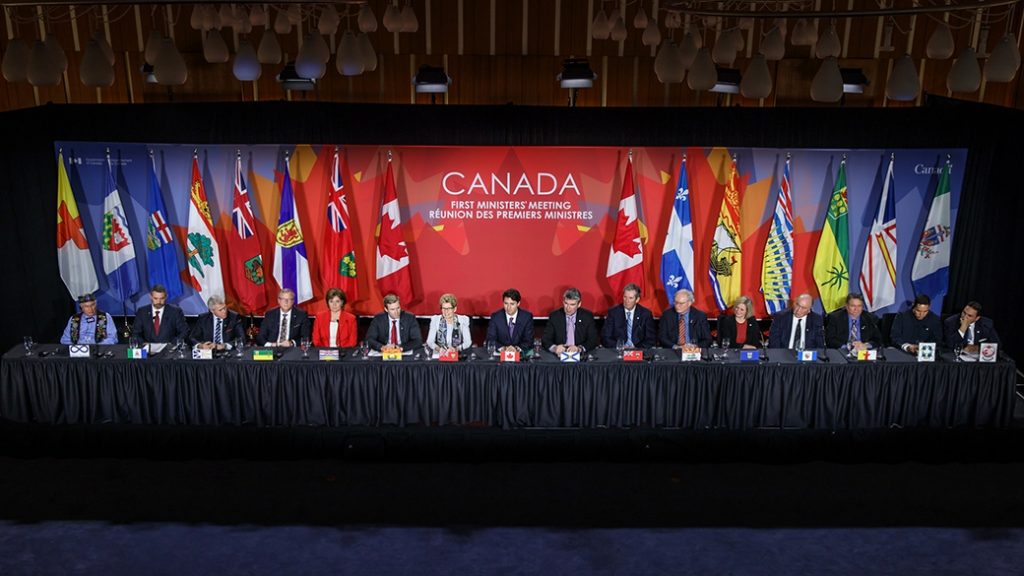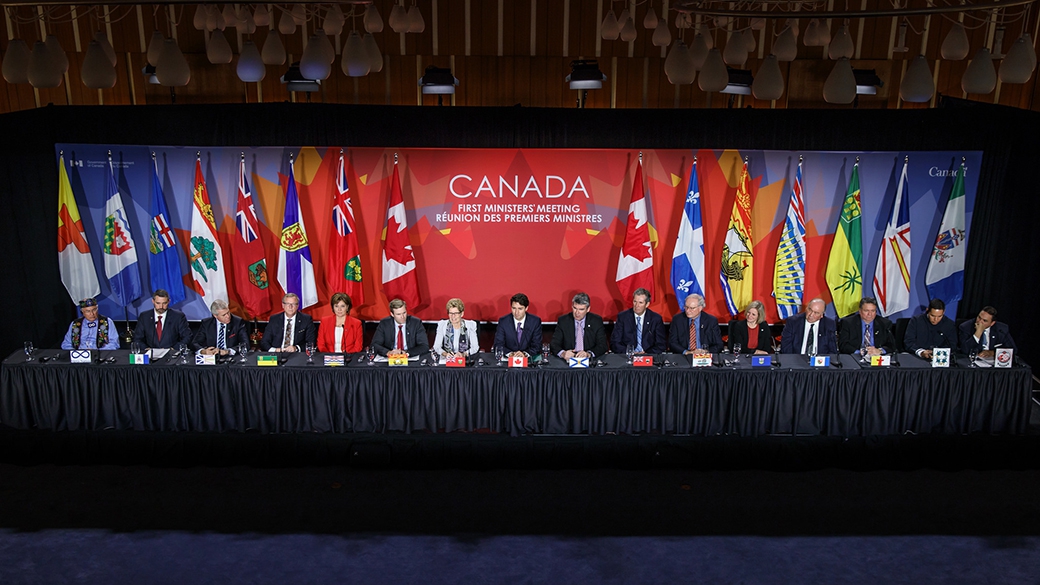Make no mistake. The pan-Canadian framework on climate change that was negotiated and finalized earlier this month is a big deal. No Canadian government to date has completed and implemented a climate change plan. And there has never been a climate plan developed with widespread input and buy-in from the provinces and territories.

In some economic sectors, the framework contains concrete measures that will entirely phase out fossil fuels, and phase in clean, renewable energy. In others, the framework will create momentum in that direction. The exception continues to be the oil and gas sector, already Canada’s largest greenhouse gas emitter. In contrast to other sectors, the oil and gas industry will be allowed to increase greenhouse gas emissions.
Let’s state an obvious but rarely acknowledged fact. Addressing climate change means gradually eliminating the use of fossil fuels, since their combustion is the cause of the problem. Thus, the climate framework’s strength is that phasing out fossil fuels is the explicit goal for some sectors.
Let’s take a look at some of the highlights:
Getting rid of dirty coal
One of the most significant measures is the phase-out of coal in the power sector. The Canadian government used the Alberta government’s timetable and will phase out coal power by 2030. Given that Alberta completed the construction of a coal plant just five years ago, this is a stunning turn.
Smarter building codes
Canada’s model building code will become increasingly stringent so that by 2030 all new buildings will generate as much energy as they use. Recent advances in building design, small-scale solar power, and power storage would actually allow Canada to reach that goal by 2025. For example, new buildings in the European Union will have to be nearly zero-energy by 2021.
Cleaner transportation
For transportation, proposals for continued improvements in vehicle fuel efficiency will reduce fuel usage and carbon emissions and spur the uptake of electric vehicles (EVs). Transportation initiatives also include a clean fuel standard—because industry consumes significant volumes of fuel, this would be important for that sector also —and a national zero-emitting vehicle strategy, including public investment in EV charging station.
Putting a price on carbon
The framework includes meaningful fiscal tools. On carbon pricing, Prime Minister Justin Trudeau stuck to his guns despite opposition from Saskatchewan Premier Brad Wall in particular, and reiterated that every Canadian province will have a price on carbon. The minimum carbon price will start in 2018 at $10/tonne and rise $10/tonne per year until it reaches $50/tonne in 2022. In order to get more than the modest reductions laid out in the framework, the carbon price must continue to rise beyond 2022.
The blind spot: oil and gas
There are important regulations to reduce methane emissions, mostly in the oil and gas sector, by 40 to 45 percent by 2025. And yet, the oil and gas industry remains a blind spot for Canada’s approach to climate action. The projected increase in emissions from oil and gas is the biggest reason the climate framework shows a 44 Mt gap between Canada’s 2030 carbon reduction target and identified emission reductions
Every other economic sector will see emissions reduced under this framework. Every other sector will be reducing its dependence on fossil fuels. But the oil and gas sector will expand and increase its emissions (according to preliminary calculations). That’s because the framework allows for increased production of oil and natural gas, facilitated by federal approvals of at least two tar sands oil pipelines and a liquefied natural gas (LNG) terminal and associated pipeline. It also doesn’t help that the federal government plans to continue subsidizing the oil and gas sector until 2025, estimated at $3.3 billion per year.
The continued support for fossil energy development creates a number of risks for Canada. The first risk is that investments in high-carbon energy infrastructure such as oil pipelines and LNG terminals become stranded when international climate policies erode the global market for fossil fuels. The second risk, articulated by the federal government’s own 2050 climate strategy, is that investments in high-emitting infrastructure get locked in, facilitating the continued production and use of high-carbon fossil fuels. This “lock in” makes it more costly or impossible to achieve emission reductions consistent with Canada’s 2030 target or limiting global warming to 1.5 degrees Celsius. Achieving Canada’s weak 2030 target would thus involve sending money overseas to buy international carbon credits rather than making investments in innovation and transition at home.
There are options for Canada to meet and hopefully exceed its 2030 GHG target domestically, and achieve deep decarbonization in the Canadian economy over the longer term. The first is for governments to turn this climate framework into a concrete and robust climate change plan by choosing the most ambitious policy options in all cases. That would mean the federal government continues to increase the carbon price floor at least at the same rate after 2022, and design regulations and standards to achieve carbon reduction goals more quickly, or reduce emissions more deeply once targets have been met. It is also critical that the federal government allow provinces to move forward with their own policies only if they are at least as stringent, something which Nova Scotia and Saskatchewan may have been given a pass on with respect to coal phase-out. Promises in the framework to have regular progress reports on policy implementation, carbon emissions, and the effectiveness of action will also be important to keep Canada on track.
But finally and most importantly, Canada should rethink the merits of exporting an increasing volume of high-carbon fossil fuels to a world that has committed to taking action on climate change. Instead, governments should plan a carefully managed decline in fossil fuels over the next few decades, and implement a just transition plan for workers and communities, rather than doubling down on fossil fuel exports.
The national climate plan is historic. It’s a huge step toward tackling climate change. And yet it’s not enough. Thankfully there are ways it can still be strengthened and Canada can do its part to limit global warming and protect the climate.
For a more detailed version of this analysis, see Dale Marshall’s contribution to Policy Options.









